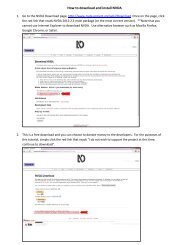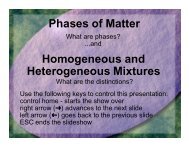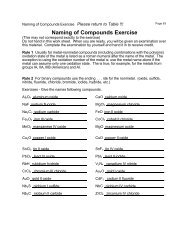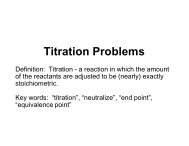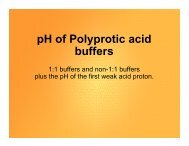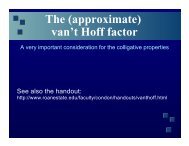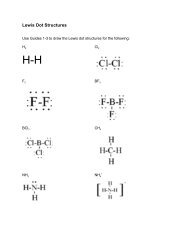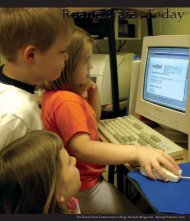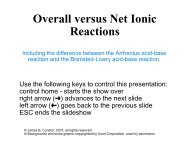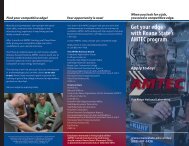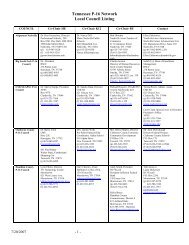2006-2008 Catalog - Roane State Community College
2006-2008 Catalog - Roane State Community College
2006-2008 Catalog - Roane State Community College
You also want an ePaper? Increase the reach of your titles
YUMPU automatically turns print PDFs into web optimized ePapers that Google loves.
7111-<strong>Roane</strong>StCommColl 6/16/06 2:58 PM Page 253<br />
ROANE STATE COMMUNITY COLLEGE 253<br />
RTT 220—Respiratory Care Science III. . . . . . . . . . . . . . . . . . . . . . . . . . . 4 Credits<br />
This course will primarily discuss the concepts and physiological effects of mechanical ventilation.<br />
Various types of ventilators from hand-held devises to computer controlled devices will<br />
be discussed. Various ventilatory adjuncts such as P.E.E.P., C.P.A.P., S.I.M.V., Pressure<br />
Support, and others will be discussed in this course. Mechanical ventilation preparation, setup,<br />
monitoring and troubleshooting will be discussed in detail. Students will be introduced to critical<br />
care medicine during the clinical rotations and will perform those procedures studied in<br />
Respiratory Care Science II. Medical rounds with physicians will be conducted along with patient<br />
case presentations.<br />
2 hours lecture—3 hours lab—6 hours clinic<br />
RTT 225—Pulmonary Function Studies . . . . . . . . . . . . . . . . . . . . . . . . . . . 2 Credits<br />
The study of pulmonary concepts and techniques for testing of pulmonary function will be discussed,<br />
including specialized studies and evaluations.<br />
2 hours lecture<br />
RTT 230—Respiratory Care Science IV . . . . . . . . . . . . . . . . . . . . . . . . . . . 6 Credits<br />
This course will be a continuation of Respiratory Care Science III. Concepts of ventilator<br />
weaning will be discussed. Various types of ventilators and techniques for monitoring and adjusting<br />
parameters will be discussed. Students will begin work in the critical care areas.<br />
Procedures learned in Respiratory Care Science III will be performed by students during this<br />
clinical rotation. Students will continue physician rounds during this rotation, and gain experience<br />
in the use of advance patient monitoring equipment and working with various mechanical<br />
ventilators.<br />
3 hours lecture—3 hours lab—12 hours clinic<br />
RTT 231—Pathology of Respiratory Diseases II . . . . . . . . . . . . . . . . . . . . 2 Credits<br />
A continuation of Pathology of Respiratory Diseases I. (Summer Semester - First Year)<br />
2 hours lecture<br />
RTT 235—Neonatal and Pediatric Care . . . . . . . . . . . . . . . . . . . . . . . . . . . 3 Credits<br />
A detailed study of respiratory care concepts and techniques in neonatal and pediatric medicine.<br />
A close look at advanced equipment used in this specialty area as well as disease<br />
processes will be discussed.<br />
3 hours lecture<br />
RTT 245—Respiratory Care Science V. . . . . . . . . . . . . . . . . . . . . . . . . . . . 6 Credits<br />
This course introduces students to special therapeutic and diagnostic procedures in respiratory<br />
care. Elements of home care to include: equipment, patient/environmental assessment, and<br />
state/federal regulations will be discussed. Theory and introduction to special diagnostics such<br />
as bronchoscopy, stress testing, pulmonary rehabilitation, metabolic studies, and brachytherapy<br />
will also be included. Patient education methods will be introduced. Care of patients in the subacute<br />
care will also be introduced to the student. In the clinical setting studies will continue<br />
work in the critical care areas and will work with and perform those modalities discussed in<br />
Respiratory Care Science IV. Students will also gain knowledge of and work in the pediatric<br />
and neonatal intensive care areas. Students must complete a final clinical summation evaluation<br />
during this clinical rotation.<br />
3 hours lecture—3 hours lab—12 hours clinic<br />
RTT 260—Hemodynamics and Rhythms . . . . . . . . . . . . . . . . . . . . . . . . . . 3 Credits<br />
This course will introduce the student to the following: Theory and application of cardiac output<br />
measurement. Arterial line insertion techniques, care, and hazards. Hemodynamic studies to include:<br />
insertion, care, and hazards of flow directed balloon tipped catheter and the central venous<br />
pressure catheter. Pressure monitoring will discuss central venous pressures, right arterial pressures,<br />
right ventricular pressures, pulmonary artery pressures, and pulmonary occluding pressures.<br />
Study will also introduce the student to equipment associated with hemodynamic<br />
monitoring such as: transducers and monitoring devices. Waveform interpretation with clinical<br />
application will be discussed. Fundamentals of electrocardiography will be introduced to include:<br />
lead application, pharmacology for the cardiovascular problems, and tracing interpretation.<br />
Studies in fluid and electrolyte balance as it relates to respiratory care will also be discussed.<br />
3 hours lecture<br />
Course Descriptions



